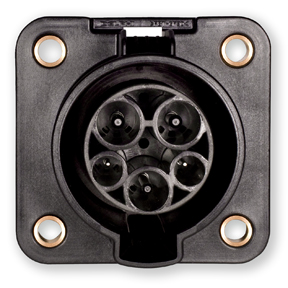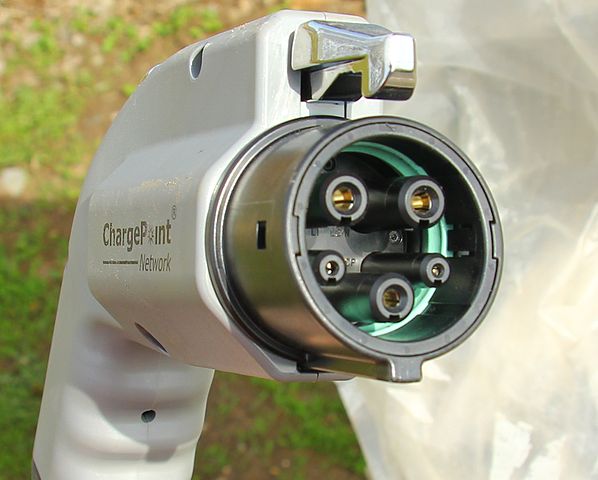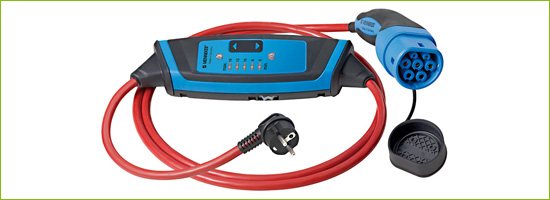Last Update: September 7, 2018
Remember that the difference between a hybrid vehicle and an electric vehicle is the ability to charge the battery pack from the electric grid. A "regular" hybrid vehicle has some electric bits in the drive train, but the electricity is derived 100% from burning gasoline. In a plug-in vehicle, either plug-in hybrid or battery electric vehicle, the car owner can plug in to charge the vehicle with external electricity.
The plug-in electric vehicle (PHEV or BEV) does not have a "regular" power outlet.


Instead a special purpose charging cord is used. This cord has the three wires normal for AC power (two hot lines, plus a ground wire) plus two wires used for control signals. The design of those control signals, and even the physical design of the plug, is meant for safety e.g. allowing us to charge electric vehicles in the rain.
The J1772 cord just shown is used in at least North America. In at least Europe and China other physical charging cord designs are used. In Europe the same J1772 control signals are used, just via a different plug.

AC and DC make my car go
The J1772 cord just described is used for single phase AC charging -- "single phase" being the type of AC we typically use at home.
All battery packs store DC electricity. The charging equipment must convert the AC electricity to DC to charge the battery pack. AC charging is of course used because it is ubiquitously available.
Another factor is that J1772 AC charging is typically limited to below 10 kiloWatts, and a full recharge time requires several hours. Therefore "fast charging" is attractive for those wanting to take long trips. Fast charging runs at power levels from 50 kiloWatts to over 100 kiloWatts, and 150 kW to 400 kW fast charging is in development.
Typically fast charging uses DC electricity, meaning the charging station is directly connected to the battery pack. There are control signals again to make this safe, and the charging station must adjust the voltage it delivers to match battery pack voltage.


